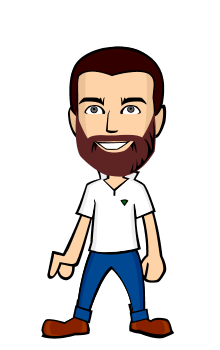So last week I taught a lesson at university and I said I would share some of the tips from that lesson in this blog. So here are some of the basic things I have picked up from filmmaking from all types of film genre. I would like to say that rules are made to be broken, however I was always taught that in order to break the rules, first you have to know the rules. So here goes.
Establishing your location is important; this is something I have been guilty of. Letting the audience know where your scene is taking place is very important, you know because you shot it but the audience need to know. This doesn’t always have to be done straight away for example, two butch men covered in blood talking about carving up something, cut to a wide of them in a butchers is a reveal. You are holding it back for a reason.
Crossing the line, this basically means if you have a scene like two people talking you should draw an invisible line through them and make sure you always shoot on the same side of the line. If you don’t it can become confusing to people for instance, if you have a side on shot of a man walking down the street right to left. If you were to film him from the other side then the man would appear to be walking left to right, which could become confusing to the audience.

Change framing for cutting. This means when you cut from one shot to the next there should be a significant difference in angle and zoom. This it to make the cut work without jarring the audience. I believe the rule is the angle should change at least 30 degrees.
Coverage is something that not all directors will do, I cant tell you the amount of times shooting coverage has saved me. Coverage means you shoot the scene through from each angle rather than just the section you are going to use according to your storyboard. So for instance if you have two people having a conversation then you would shoot the whole scene through from both angles and then cut it in the edit. Check out my new indie film 'Falling' i shot all the way through from each angle with dialogue.
Sound. I could talk all day about getting good sound but I just want to talk about the very basics. Firstly always point the boom at the mouth, generally get the audio from the person you’re filming but if it’s a conversation you could move the boom to get everyone’s audio as long as you know the script. Make sure you always get a wild track of each location lasting the time the scene will last if possible. It’s far easier to lay a track down rather than cut it up and fade it in and out to make is as long as you need it.
Lighting. Make sure lighting is consistent. If you’re filming inside and its meant to be daylight then blackout all the windows and use lights to create the look of daylight. This way when the light changes outside, yours will be consistent. If your shooting outdoor then try to shade the subjects face and use lights to create a more even neutral light (not always easy)
Storyboard and shooting order. I always have a storyboard because it lets me know before I shoot the film how it’s going to look, if its going to cut and what I need to shoot. It also helps you work out the shooting order, Its easier to move people than lights because it can take a long time to set up lighting for a scene. So make sure you get everything you need from that scene before changing the lighting again.

Shooting a scene, make sure you show what you need but don’t go overboard. For instance if someone is making a coffee you don’t need to show every step of this if any! Only show what is important! If you show a cut away of a clock it means that time is important to the scene, show a bag if there is something important in the bag!
Framing choices can be difficult to decide. If to people are having a conversation then maybe you would show mid shots of them till they are drawn in to the conversation at which time you could use close ups. You could also shallow the depth of field to focus on just them, a technique that would draw the audience in as the characters become drawn in. Shooting a long lens close up will make someone fill the frame, shooting a wide angle lens close up can make someone look distorted as seen in my short 'Ill Call You Back'
Like I said I could go on and on but I am trying to keep it short and sweet, you can always go on to read many books about all of these tips if you want. I hope this has been some help to you and feel free to add your own tips.
Please check out my Web TV to watch movies online: http://www.filmannex.com/webtv/markkuczewski



